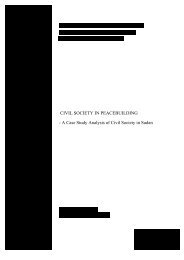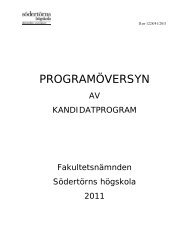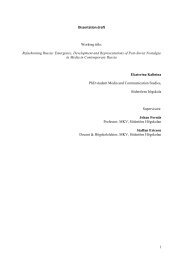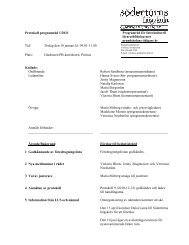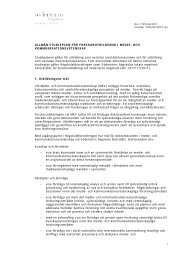Underlying Reasons for the Persistence of Female Genital Mutilation
Underlying Reasons for the Persistence of Female Genital Mutilation
Underlying Reasons for the Persistence of Female Genital Mutilation
Create successful ePaper yourself
Turn your PDF publications into a flip-book with our unique Google optimized e-Paper software.
ABSTRACT <br />
<strong>Female</strong> genital mutilation is an ancient custom that has preserved and persisted <strong>for</strong> thousands <strong>of</strong><br />
years. In recent decades it is recognized as a violation <strong>of</strong> human rights <strong>of</strong> girls and women since<br />
<strong>the</strong> practice has physical and psychological health consequences. Every year millions <strong>of</strong> girls are<br />
facing FGM, and in Africa <strong>the</strong> occurrence is common. There<strong>for</strong>e <strong>the</strong>re is a worldwide consensus<br />
where international, national and local organizations and governments take measures to stop<br />
FGM. This essay will examine <strong>the</strong> persistence <strong>of</strong> FGM though recognizing <strong>the</strong> various<br />
perceptions and motives behind <strong>the</strong> practice. Human rights law provides legal frameworks that<br />
should be adopted and adjusted by <strong>the</strong> states ratifying <strong>the</strong>m. Some conventions specifically<br />
describe <strong>the</strong> abandonment <strong>of</strong> violence <strong>of</strong> harmful practices towards women and children, and<br />
FGM is considered one <strong>of</strong> <strong>the</strong>m. These approaches are tackling with a practice that is deeply<br />
rooted in social, cultural and religious traditions and must be understood in its <strong>for</strong>m. A case study<br />
research was conducted by semi-structured interviews where different perceptions and opinions<br />
on FGM were captured. This is later complemented with previous research and various statistics<br />
to streng<strong>the</strong>n <strong>the</strong> overall understanding <strong>of</strong> <strong>the</strong> issue. It is acknowledgeable to address women’s<br />
position in societies where <strong>the</strong>y generally has little access to power and resources, and where<br />
traditional and cultural practices mark an important social convention. It is not enough by<br />
implementing human rights law to change attitudes and behaviours. The decision <strong>of</strong> change is<br />
crucial by understanding <strong>the</strong> importance <strong>of</strong> <strong>the</strong> practice hence given <strong>the</strong> education needed to<br />
empower women’s everyday life.<br />
Key words: FGM, Human Rights, Culture, Tanzania,





